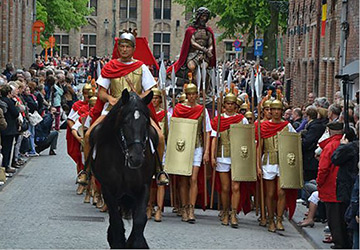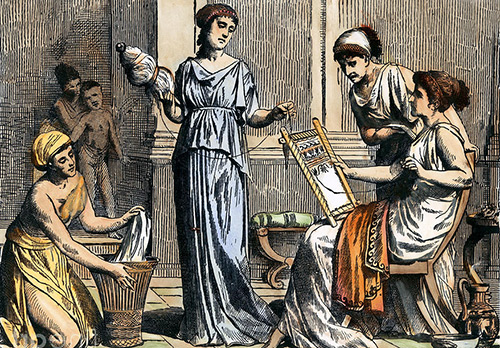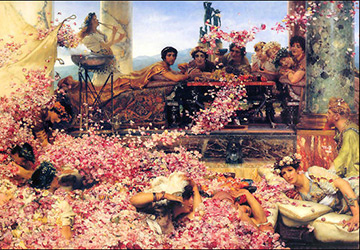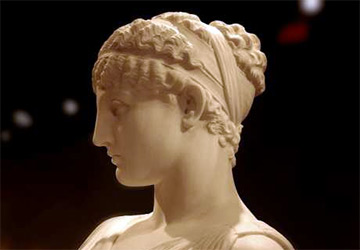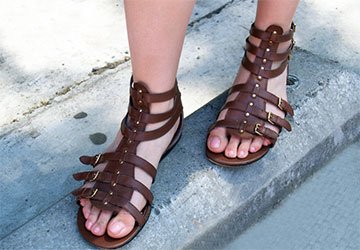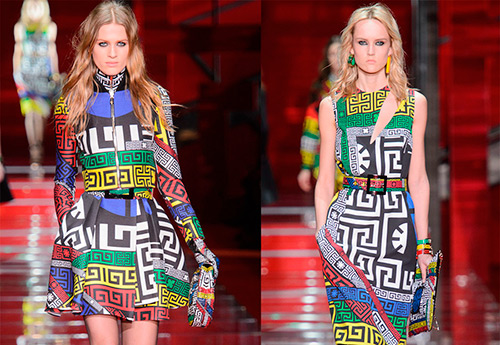Fashion history
Costume history and fashion in ancient Rome
"Lords of the world - people dressed in togas"
Virgil "Aeneid"
Ancient Rome chose the culture of Ancient Greece conquered by it as the foundation for its own culture. The Romans adopted the religion from the Greeks, only renaming the gods. So, Aphrodite became Venus, and Zeus became Jupiter. From the Greeks, the Romans learned to build temples with columns and make sculptures from marble.
The main difference between the Romans and the Greeks was militancy. The Romans were famous for their warriors back in the days of the Roman Republic, and the Roman Empire included both the territories of North Africa and the British Isles.
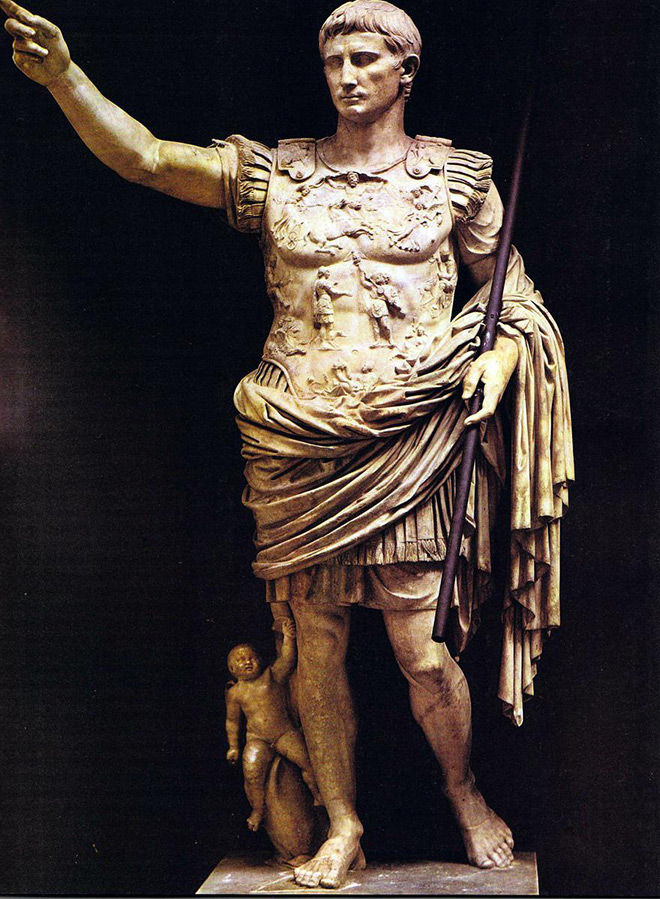
Emperor Augustus statue
Clothes - tunic, top armor and toga
As for clothing, the traditional clothing of the Romans was based on greek chiton, transformed into a tunic, and a Greek cloak-himation, which became a Roman toga.
The main fabrics from which the clothes of the ancient Romans were made were wool and flax, and the Romans were also better known for silk, which was brought from another empire - the Chinese.
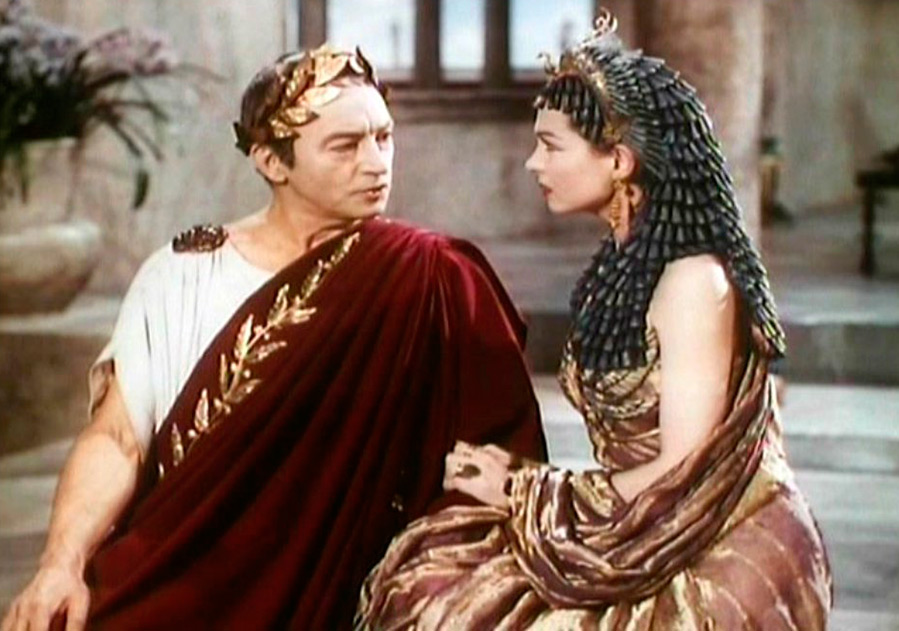
Still from the movie "Caesar and Cleopatra" 1945
Caesar wears a tunic (white) and a toga
The Romans sewed clothes at home; there were almost no artisans who sewed clothes in the Roman Empire. So, the emperor Augustus, who lived in the 1st century BC, was proud that his tunics and togas were sewn first by his mother, and then by his wife.
Tunic - rectangular cut clothing
from fine wool or linen,
worn under the toga as underwear
or used as a home dress.
All the men of the Roman Empire wore tunics. The tunic was sewn on the shoulders and worn over the head. There were various types of tunics. For example, tunic colobium had short sleeves and always belted.
Tunic talaris had long narrow sleeves and was worn by people of noble birth. Dalmatic tunic was longer with wide sleeves that resembled a cross when unfolded. The first Christians living in the Roman Empire often wore this particular type of tunic.
Toga - outerwear of the citizens of Rome,
which is a piece of white woolen cloth
three times the height of a person and
difficult to drape around the body.
Cloaks were worn over the tunic. One of which was the toga. However, only men could wear a toga, and at the same time, they were Romans by origin. No wonder the Romans themselves called themselves a people dressed in togas.
A toga is a cloak made of a large piece of woolen fabric (6 by 1.8 meters), rectangular, and a little later elliptical in shape. The toga wrapped around the figure and folded in folds. Slaves helped their master put on and drape the toga.
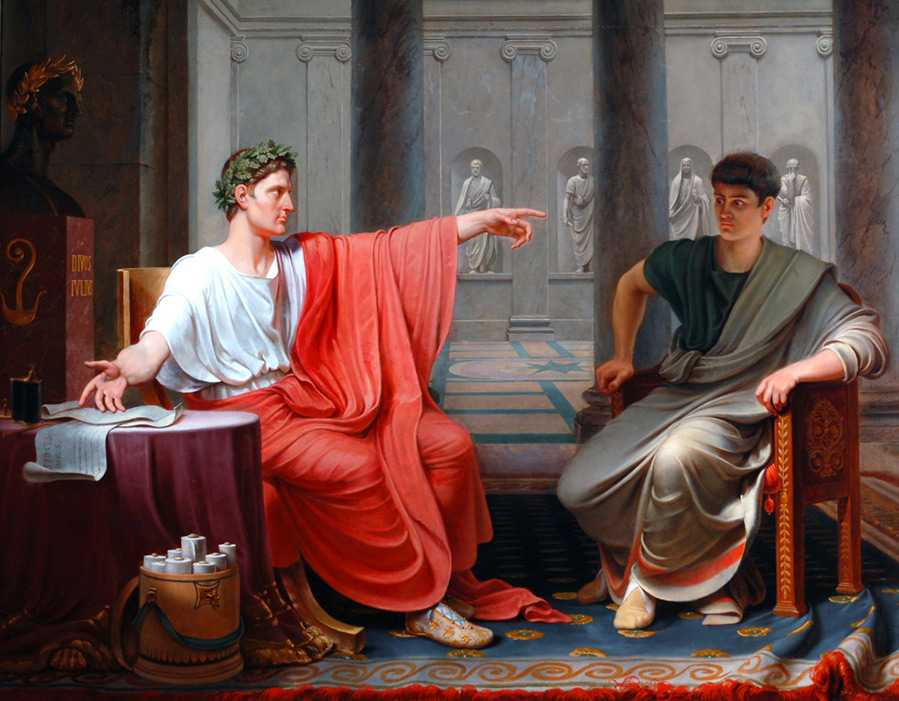
Caesar reproaches Cornelius Cinna with betrayal.
Depicted in the picture are dressed in tunics and togas
Color played an important role in the costume of the Romans. The colors of the clothes could be very different, but most often the clothes were monochromatic. A certain meaning was also attached to the color of clothing in Rome. Thus, magenta was considered the color of power. Only emperors and triumphant generals could wear purple clothes (triumphant generals, for example, wore a toga called pikte - purple and embroidered with gold).
Purple stripes could appear on senators' clothing. Later, the purple color, as a symbol of power, was preserved in the robes of European kings and the vestments of the cardinals of the Catholic Church.
The association of purple in clothing with power may have been associated with the high cost of purple clothing itself. The inhabitants of Phenicia, the people who lived on the Mediterranean coast, were able to get purple paint. They caught and pulverized certain shellfish, thus producing a purple fabric dye. The fabric of this color was very expensive.
In addition to purple, white also had a certain meaning. White clothes were considered festive clothing. As for the cloaks, besides the toga, the Romans also wore paludamentum, lacer and penula.
Paludamentum - the cloak of the emperor and the highest nobility, it was thrown over the back and left shoulder, and on the right was chopped off with a buckle. Also, paludment could be worn in the form of a scarf - wrapped several times around the left hand.
Lacerna - a raincoat in the form of a rectangular piece of fabric that covers the back and both shoulders, and is fastened with a fastener in the front.
Penula - a leather or woolen cloak, in the shape of a semicircle, a hood could be sewn to it. Such a cloak was often worn by travelers and shepherds.
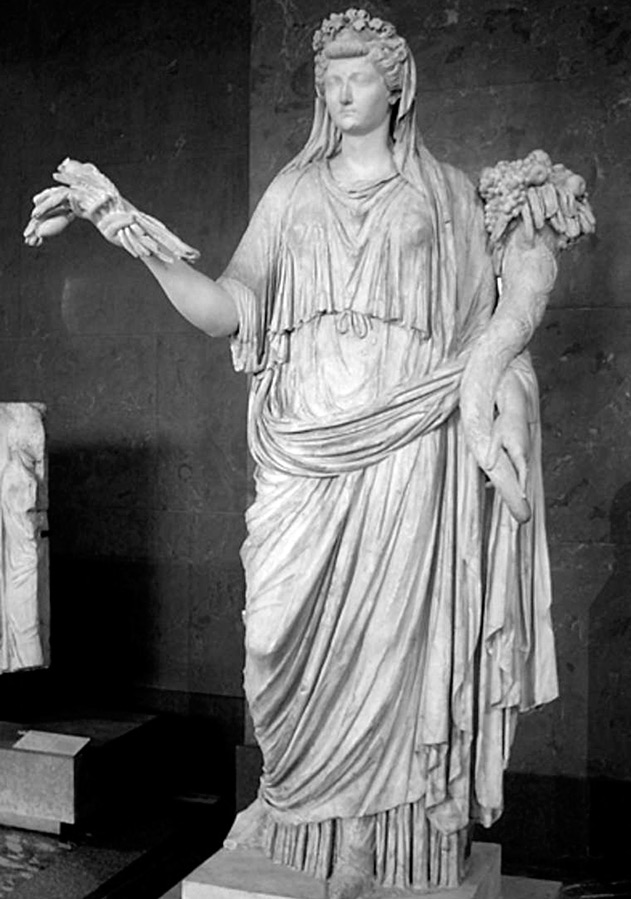
Sculpture of the Empress of Libya
As for women, the underwear of the Romans was also a tunic, always long, in contrast to men. Over the tunic, married women wore a table - long clothes with or without sleeves, belted under the bust with a belt (high waistline). The bottom of the table was decorated with a wide pleated frill, as well as a border on the collar and armholes. The table could not be carried by slaves.
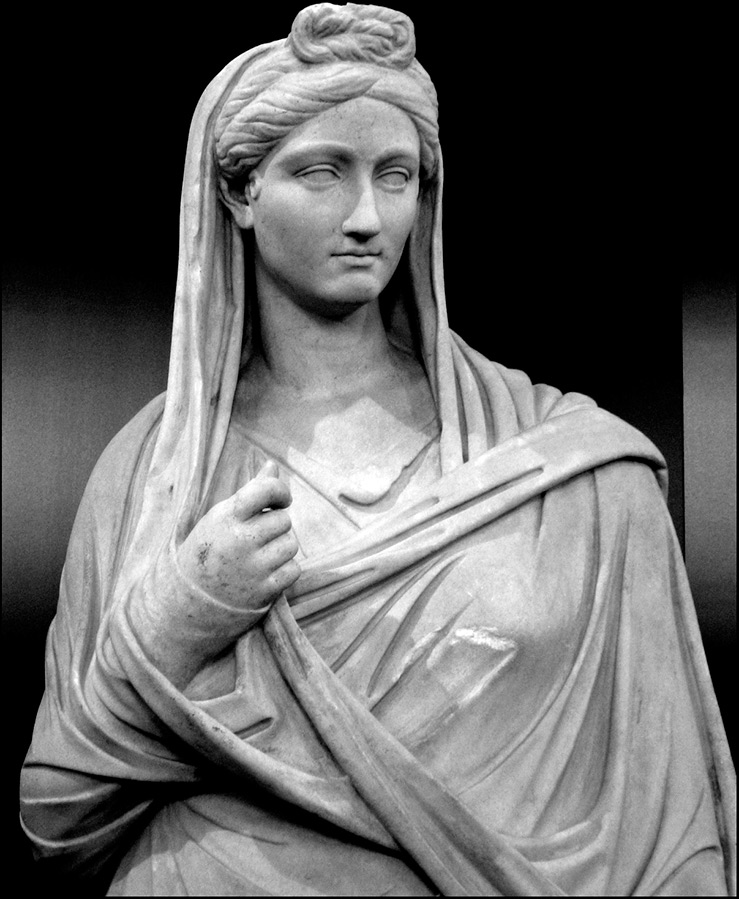
The cloak worn by the Romans was called the palla... Palla was similar to the Greek himation, draped in various ways, with an overlap at the waist, and sometimes covered the head with the upper edge. By the way, unlike Greek women, Roman women on the streets of cities could well go out with bare head... The palla cloak was fastened on the shoulders with clasps called agraphs.
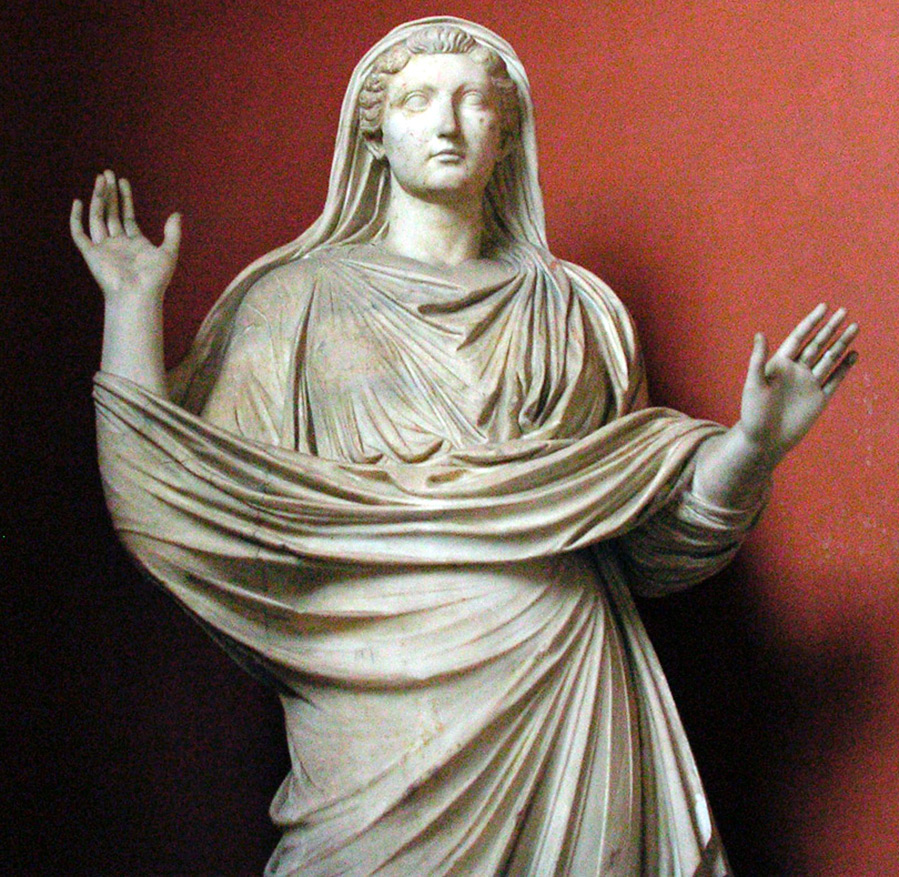
Praying Libya Statue
Dressed in a pallu cloak
Swimwear was also known to the Romans - they were thin strips of fabric that were tied on the chest and on the hips. Also, the Romans wore stanzas - the prototype of modern bras. Strophies (leather strips) were worn under tunics and their purpose was to support the chest from below.
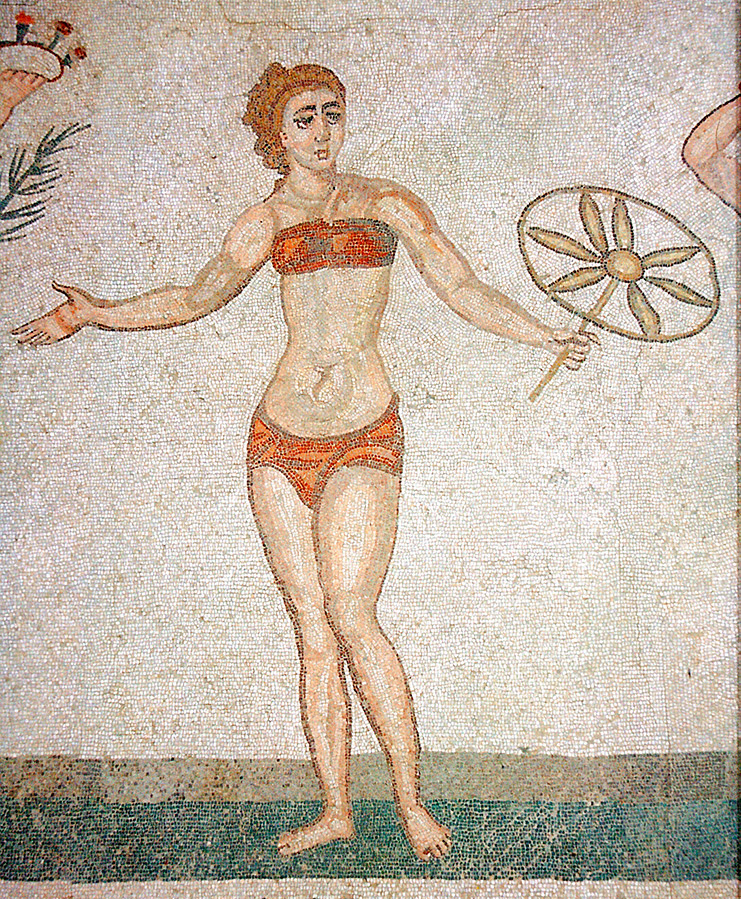
Ancient roman mosaic
Bathing suit
However, the costume of the ancient Romans was divided not only into women and men. It was also divided into civilian and military. Roman legionary soldiers had reliable armor.
the expression "to put on the sagum" among the Romans meant "to start a war"
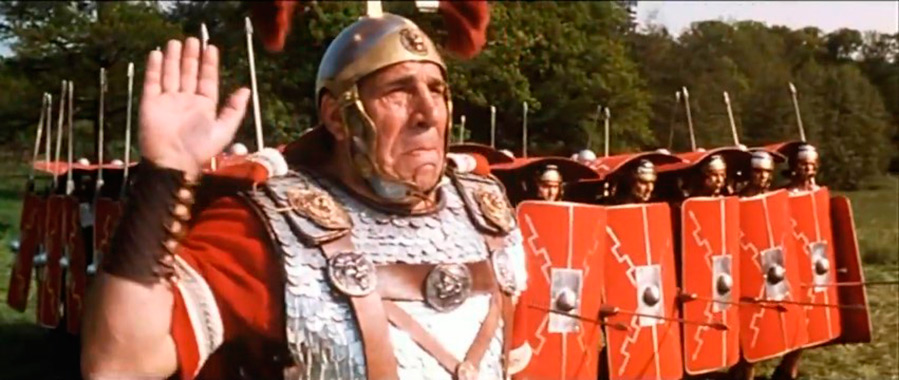
A scene from the movie Asterix and Obelix vs. Caesar, 2000
So, in the era of the Empire, soldiers wore sagum - a short cloak made of woolen fabric. Armor was an obligatory element. The military leaders wore scaly shells. Leather or metal leggings were attached to the legs. Also, after the wars with the Gaul tribes, Roman soldiers will begin to wear woolen pants below the knee - mainly to protect the legs.
Legionnaires' shoes - kaligi - boots that were held on their feet by strong straps. Soldiers could not do without helmets. The Romans wore both leather and metal helmets of a wide variety of shapes. The helmets of the centurions (commanders of military units) were decorated with a silvered crest, as well as a sultan made of horsehair and feathers. The helmets of the standard bearers were covered with animal skins.
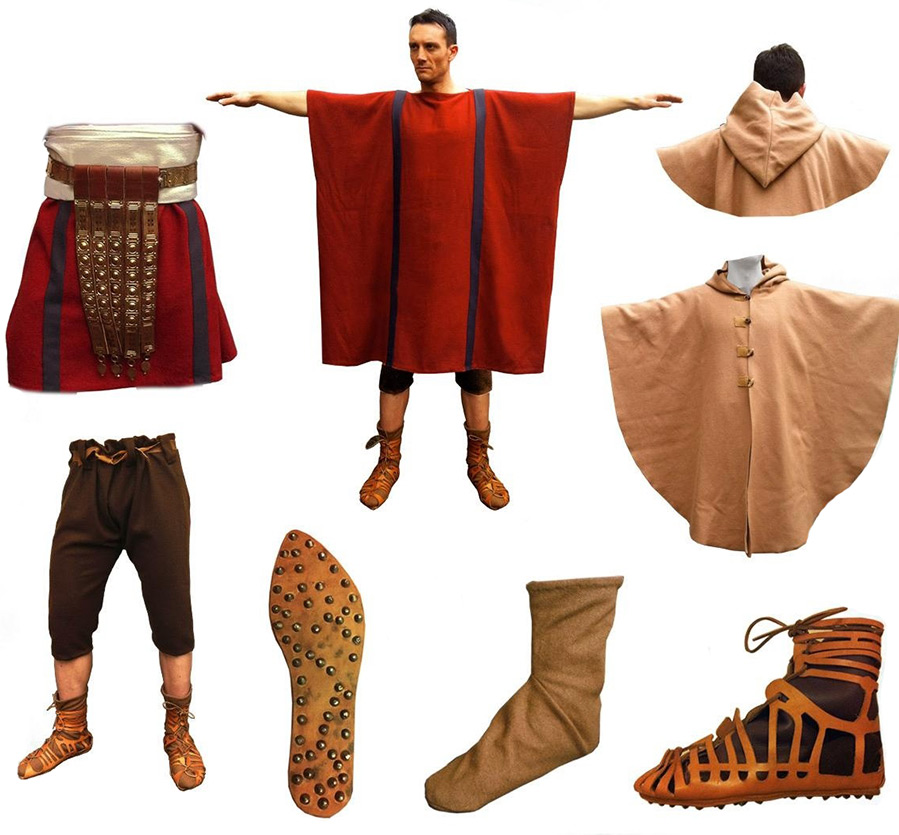
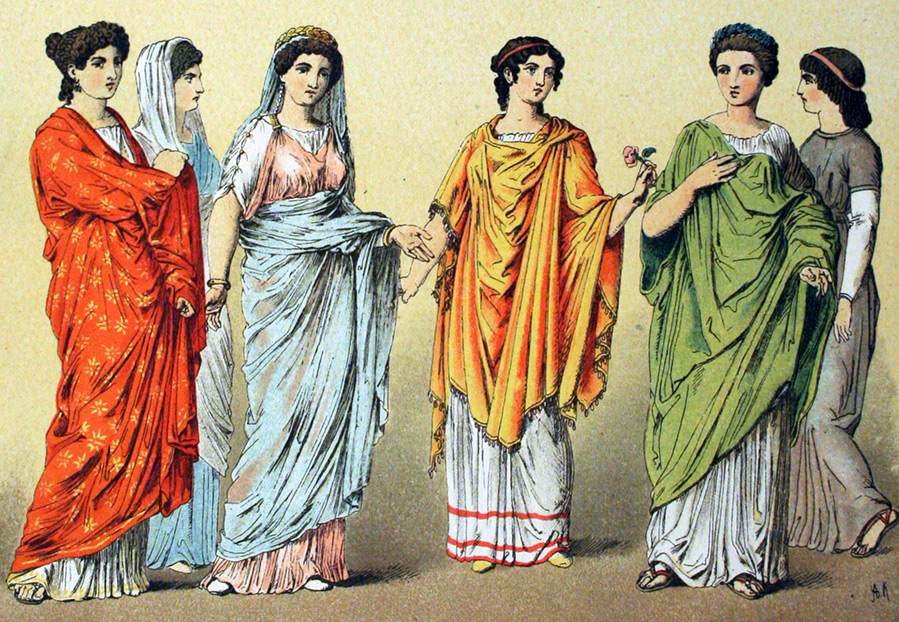
Comments and Reviews
Add a comment
Rating news
Shades of clothing that make women look younger
What shades of hair make women younger: rules and photos
Funny wedding dresses - photos and ideas
12 most expensive down jackets for the winter
How to look 25 at 40: tips from supermodels
Beautiful schoolgirls
Anti-aging haircuts and hairstyles for women
Fashionable skirts for autumn and winter
Fashionable women's trousers for the cold season
Fashionable and stylish sandals for summer 2024
Spring-summer 2024
 Fashionable dresses and tops with thin spaghetti straps
Fashionable dresses and tops with thin spaghetti straps
 Bandana tops: how to wear stylishly and beautifully
Bandana tops: how to wear stylishly and beautifully
 How to put together the perfect men's wardrobe for the summer
How to put together the perfect men's wardrobe for the summer
 Fashionable shorts for spring-summer 2024
Fashionable shorts for spring-summer 2024
 Fashionable skirts for spring-summer 2024: a guide to online shopping
Fashionable skirts for spring-summer 2024: a guide to online shopping
 The most fashionable dresses spring-summer 2024: styles and colors
The most fashionable dresses spring-summer 2024: styles and colors
 Fashionable total look 2024: ideas of images and trends
Fashionable total look 2024: ideas of images and trends
